Body condition scoring for beef cattle
Monitoring body condition score allows you to make educated management decisions regarding the future of your cattle.

Body condition scoring is a visual assessment of the animal’s body energy reserves. In other words, an estimation of the animal’s fat deposition or lack thereof. Body condition is scored subjectively on a scale from 1 to 9 for beef cattle, with 1 representing an emaciated animal and 9 representing a very obese animal (see Table 1/Figure 1 in Nutrient Requirements of Beef Cattle). Cattle with a body condition score of 5 to 7 is considered most ideal.
Body condition score (BCS) can be an effective tool to evaluate the health, nutritional status and economic value of your beef cattle. For example, cattle that are too thin are at greater risk from metabolic challenges, diseases, experience decreased milk production, lower quality colostrum, reduced fertility, dystocia and their offspring may experience reduced performance. Conversely, over-conditioning is expensive and can lead to greater risks of compromised udder development, dystocia, lameness and reduced feed intake.
Body condition scoring can be conducted multiple times throughout a year to implement and monitor changes. For cows, BCS evaluation should occur at weaning (60 to 90 days prior to calving) and calving. Assessing BCS at weaning allows producers time to separate and manage thin or excessively fat cows differently so they can achieve the optimum BCS (5 to 7) at calving. Body condition score can be more easily managed after weaning when the cow’s nutrient requirements are at their lowest. It becomes increasingly difficult to add body condition when cows are lactating and nursing a calf. For other cattle, such as calves and fed cattle intended for market, body condition should be assessed prior to marketing to identify if cattle are in optimal body condition for their intended market.
Likewise, the fitness and body condition of all cattle should be assessed prior to transport to confirm cattle are able to withstand the stress and rigor of transportation. Beef Quality Assurance guidelines recommend that cattle with a BCS less than 2 should not be transported. Monitoring BCS will allow for the transportation of cull animals before BCS becomes less than 2, while other animals may need additional time to recover if being treated or need to consume additional nutrients (i.e., energy, protein) to achieve a greater BCS.
|
Table 1. Beef Cattle Body Condition Score Decision Tree. (Source: Nutrient Requirements of Beef Cattle, 2016) |
|||||||||
|---|---|---|---|---|---|---|---|---|---|
|
Reference Points |
Body Condition Score (BCS) |
||||||||
|
1 |
2 |
3 |
4 |
5 |
6 |
7 |
8 |
9 |
|
|
Physically weak |
Yes |
No |
No |
No |
No |
No |
No |
No |
No |
|
Muscle atrophy |
Yes |
Yes |
Some |
Slight |
No |
No |
No |
No |
No |
|
Brisket fat |
No |
No |
No |
No |
Slight |
Some |
Full |
Distended |
Extreme |
|
Fat over shoulder |
No |
No |
No |
No |
Slight |
Some |
Yes |
Yes |
Yes |
|
Visible ribs, # |
All |
All |
3-5 |
1-2 |
Maybe 1-2 |
No |
No |
No |
No |
|
Visible vertebrae |
Yes |
Yes |
Yes |
Slight |
No |
No |
No |
No |
No |
|
Visible hooks/pins |
Yes |
Yes |
Yes |
Yes |
Yes |
Some |
Slight |
No |
No |
|
Tail head fat |
No |
No |
No |
No |
No |
Slight |
Some |
Yes |
Extreme |
|
Cod fat |
No |
No |
No |
No |
No |
No |
Slight |
Yes |
Yes |
|
Mobility |
Poor |
Marginal |
Ok |
Ok |
Ok |
Ok |
Ok |
Marginal |
Poor |
Illustration and description of beef cow body condition scores 1 – 9
Source: Nutrient Requirements of Beef Cattle, 2016
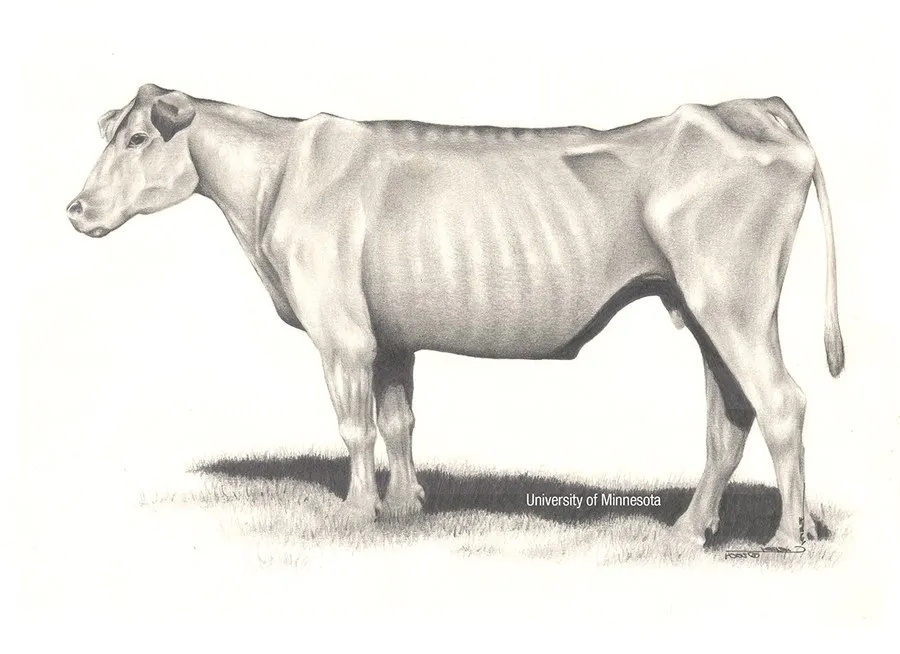
BCS 1 – Emaciated. The cow is severely emaciated and physically weak. The bone structure of shoulder, ribs, back vertebrae, hooks and pins are sharp to the touch and easily visible. No evidence of fat deposits or normal muscling (i.e., atrophy). Cows in this body condition score are extremely rare and are usually inflicted with disease and/or parasitism. Cows in this condition would qualify for the United States Department of Agriculture (USDA) market news category of “Lights.”
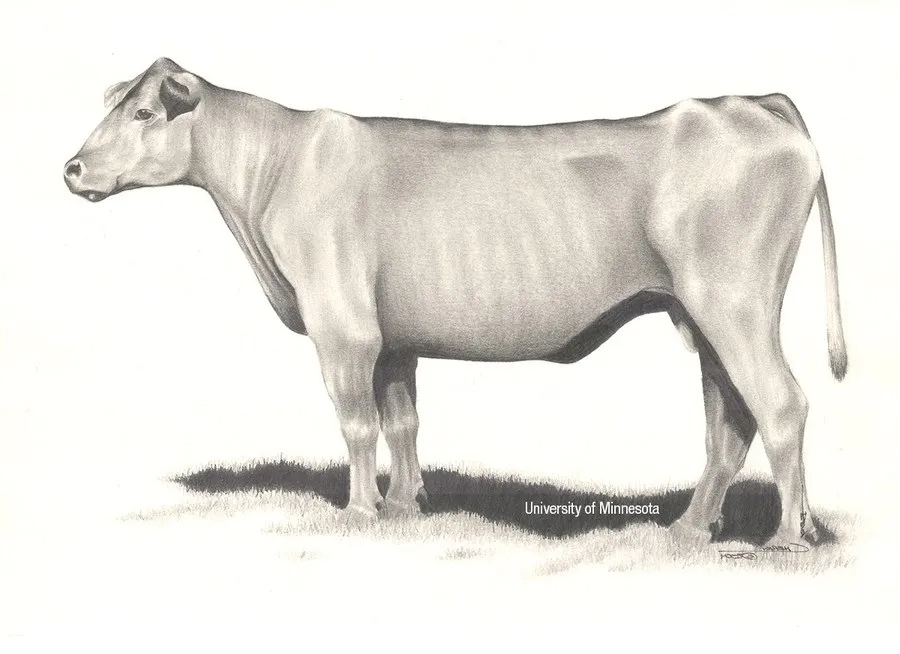
BCS 2 – Very Thin. The cow appears emaciated but not weak. No evidence of fat deposition. Muscle atrophy is significant in the shoulder, over the loin and rump, and through the hindquarters. The back vertebrae, hooks and pins feel sharp to the touch and are easily seen. Ribs can be easily identified. Cows in this condition would typically produce carcasses that would qualify for USDA market news category of either “Leans” or “Lights” depending on carcass size.

BCS 3 – Thin. The cow appears then with no fat in the brisket. There is evidence of muscle atrophy over the shoulder, loin and rump and through the hindquarter, but there is the beginning of some fat deposition over the shoulder, loin and rump. The foreribs have slight evidence of fat deposition, but the last three (11th, 12th, 13th) or more ribs are visible. The back vertebrae, hooks and pins are clearly evident. Cows in this condition would typically produce carcasses that would qualify for USDA market news category of either “Leans” or “Lights” depending on carcass size.
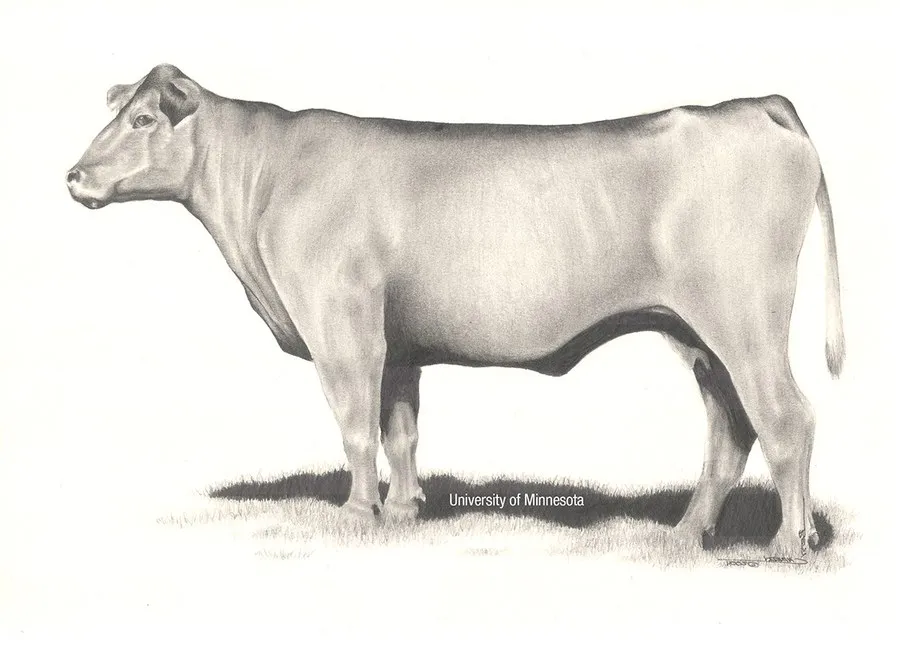
BCS 4 – Borderline. The cow appears thin, with the last two ribs (12th and 13th) easily visible. Muscle atrophy is still slightly noticeable over the shoulder, loin and hindquarter, but is approaching normal. The muscles in the shoulder are prominent as the animal moves. The back vertebrae can be identified only by palpation (with slight pressure) and feel rounded rather than sharp. The hooks and pins are covered in minimal fat and easily identified. Cows in this condition would typically produce carcasses that would qualify for USDA market news category of either “Leans” or “Lights” depending on carcass size.
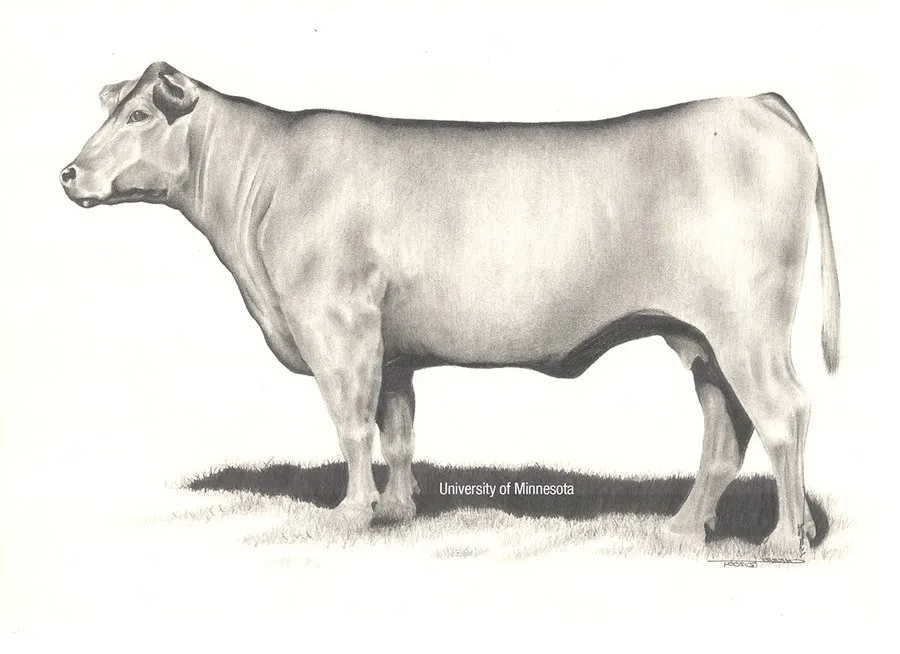
BCS 5 – Moderate. There is slight evidence of fat deposition in the brisket. Muscle expression in the shoulder, loin, rump and hindquarters are normal. A thin layer of fat covers the muscle in the shoulder and the muscles in the shoulder are not prominent when the animal moves. The last two ribs (12th and 13th) can only be seen if the cow has less than normal gut fill. Individual back vertebrae appear smooth and are not visible but can only be felt with firm pressure. The hooks and pins are covered with a layer of fat, but still distinguishable. Areas on each side of the tail head are starting to fill but are not mounded. Cows in this condition would typically produce carcasses that would qualify for USDA market news category of “Boners” (Boning Utility).
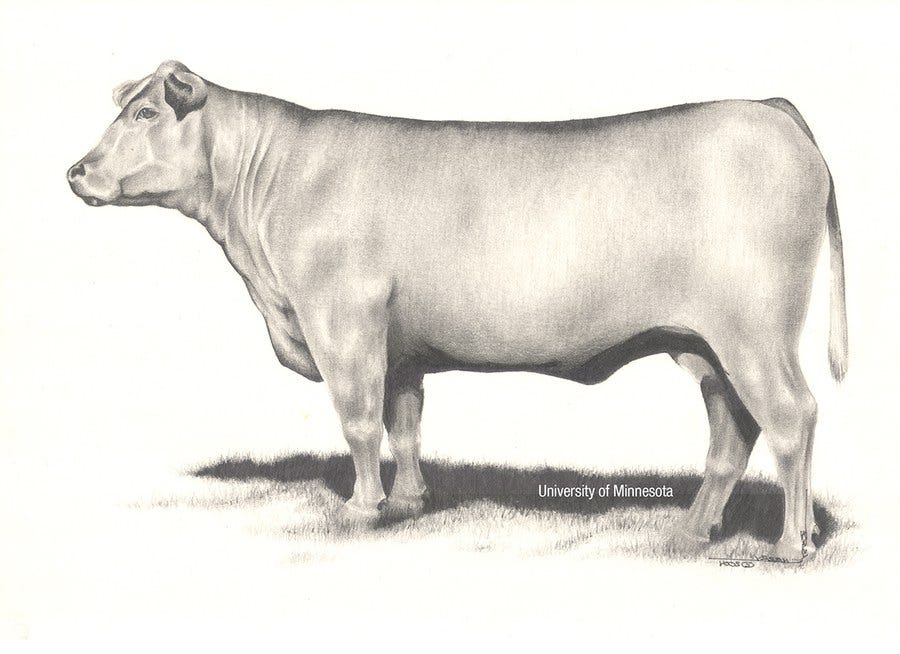
BCS 6 – Good. Some fat deposition in the brisket is evident. The cow exhibits a smooth appearance throughout with normal muscle expression. A layer of fat covers the shoulder, so shoulder movement appears fluid when the animal walks. There is a noticeable sponginess over the foreribs just behind the shoulder. The ribs of young cows are fully covered by fat and cannot be detected visually, but the flat, wide ribs of older cows may be seen. The back vertebrae are now covered by fat and muscle and can only be felt with firm pressure. The hooks and pins are embedded in fat and appear round and smooth, while there is noticeable sponginess on either side of the tail head. Cows in this condition would typically produce carcasses that would qualify for USDA market news category of “Boners” (Boning Utility).
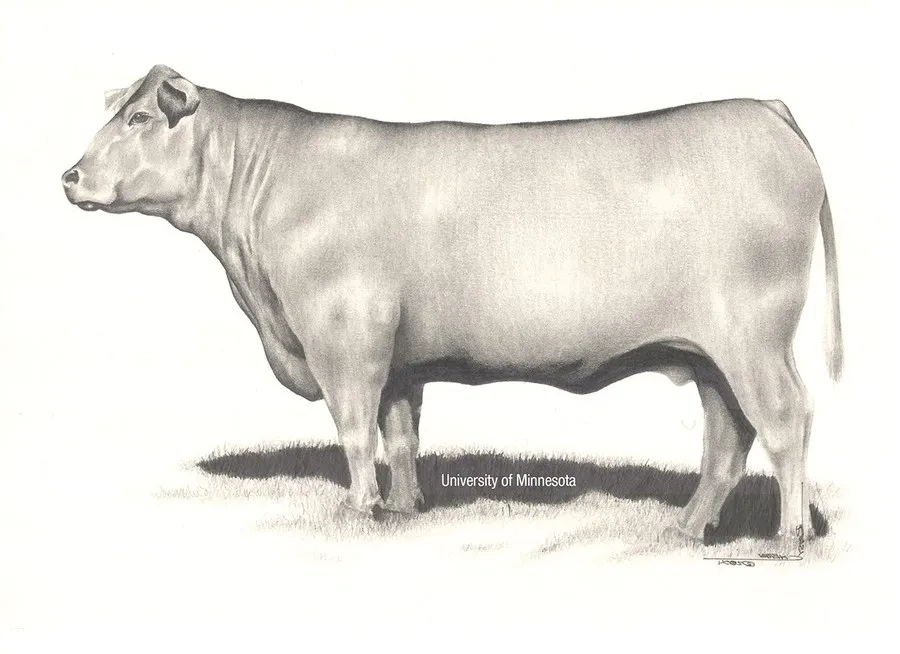
BCS 7 – Fleshy. The brisket is full, but not distended. A layer of fat covers the shoulder, so shoulder movement appears fluid when the animal walks. The ribs appear smooth and are covered by a uniform layer of fat from the forerib to the last rib. The back vertebrae are embedded in fat, and the topline is beginning to take on a square appearance. The pins are embedded in a layer of spongy fat, and there are pones of fat forming on either side of the tail head. Cows in this condition would typically produce carcasses that would qualify for USDA market news category of either “Breakers” or “Boners” (Boning Utility). Carcass fat content (26.4%) would be approaching a similar carcass fat content of steer or heifers that grade USDA Choice (28%).
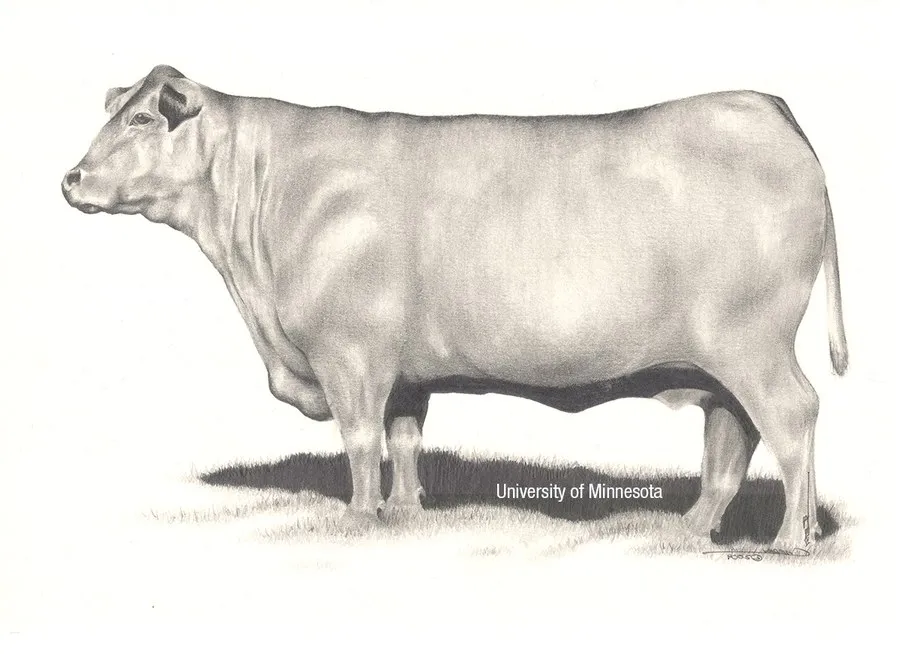
BCS 8 – Obese. The cow’s neck appears short and thick, and the brisket is distended with fat. There is no evidence of the bone structure from the shoulder, along the topline, hooks or pins. A thick layer of fat covers the shoulder and the shoulder muscle movement underneath the hide is not evident. The animal appears very square and blocky over the topline and smooth along the sides. Fat covering the shoulders, topline, and ribs appear spongy both visually and by touch. The pins are embedded in pones of fat on both sides of the tail head. There is evidence of fat deposition in the udder. Animal movement may be somewhat impaired due to excess fat. Cows in this condition would typically produce carcasses that would qualify for USDA market news category of “Breakers.”
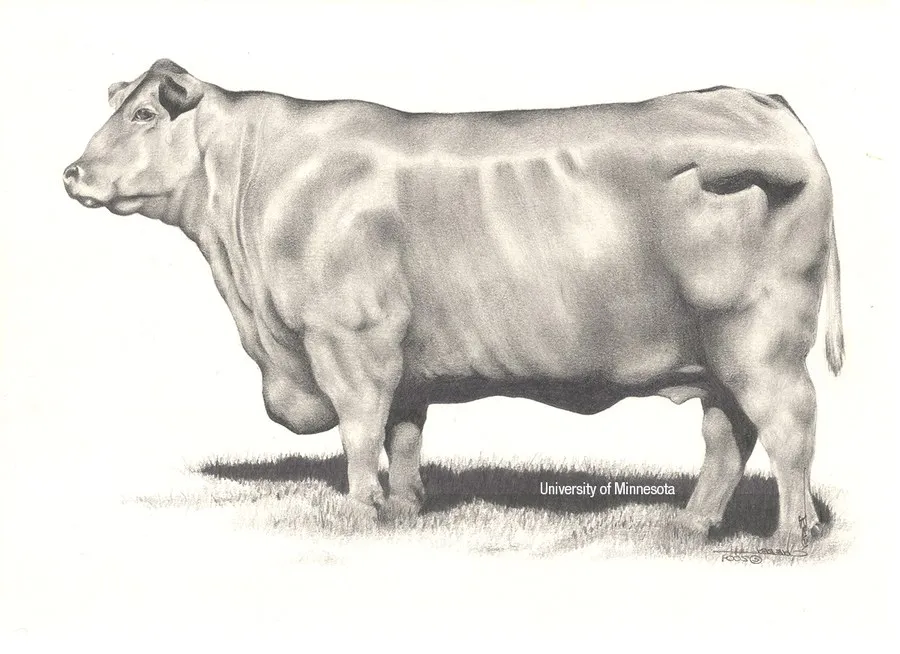
BCS 9 – Very Obese. Cows of this body condition are rarely seen. The animal appears very square and blocky over the topline, smooth along the sides, and spongy throughout. Bone structures are difficult to identify and the animal appears short-necked with a full, distended brisket. The pins are embedded in patchy pone fat on both sides and over the top of the tail head. The is significant fat deposition in the udder. The animal’s mobility may be seriously impaired by excess fat. Cows in this condition would typically produce carcasses that would qualify for USDA market news category of “Breakers.”
Body condition scoring is a useful tool to help evaluate the health and nutritional status of your cattle. Determining BSC on a regular basis will allow you to make informed management decisions to help improve the economic returns to your cattle operation. If you have questions or would like to discuss further, reach out to the Michigan State University Extension beef team experts.
This article was previously published in the summer issue of The Michigan Cattleman magazine.



 Print
Print Email
Email
